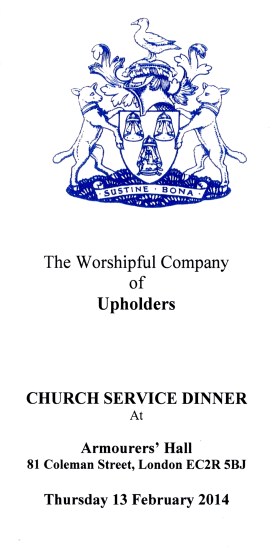
Tel: 020 7620 1818 email: cookandbutler@btconnect.com
The Worshipful Company of Upholders
www.upholders.co.uk
Installation Dinner,
8th April 2025, Cutlers' Hall, London
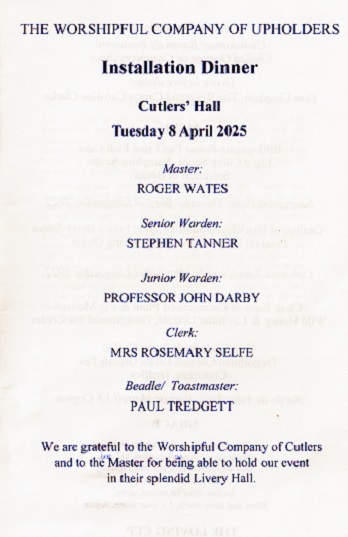
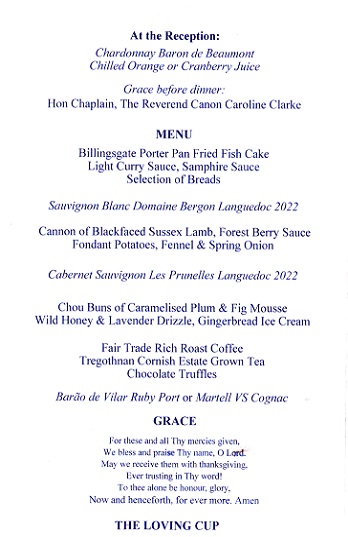
Church Service
Dinner,
March 2017, Armourers' Hall, London
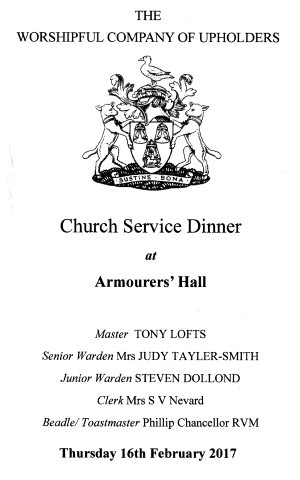
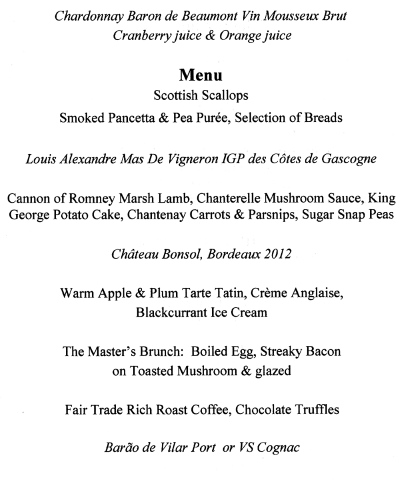

Church Service
Dinner,
February 2016, Armourers' Hall, London
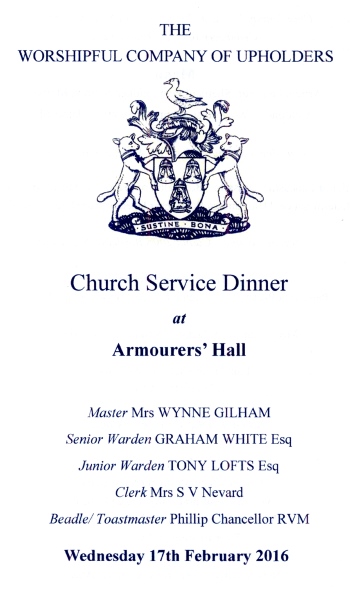
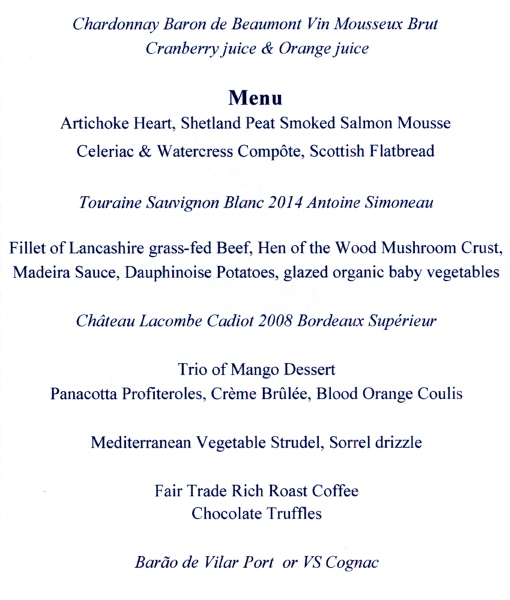

Court Dinner
January 2016, Cutlers' Hall, London
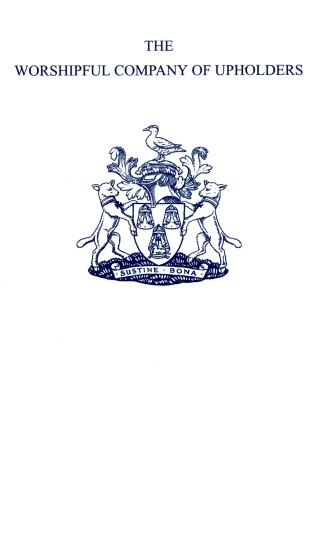
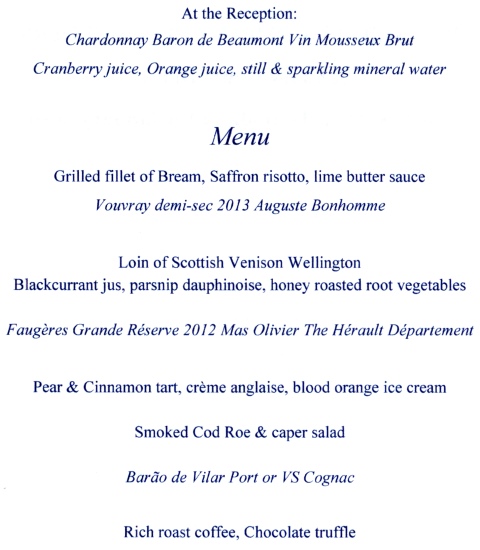

THE ORIGIN OF LIVERY COMPANIES
The Livery Companies of the City of London can trace
unbroken descent from mediaeval Trade Guilds. The term “Guild” is said
to derive from the Saxon word “gildan”, to pay, since members paid
towards the costs of the brotherhood. Guilds were craft or trade
societies. They protected consumers and employers against incompetence
or fraud by training sufficient apprentices to provide an adequate
supply of skilled craftsmen selling goods of true quality and weight.
They helped workers by preventing unlimited competition and ensuring
reasonable wages and conditions. They searched out inferior work and
punished the offenders. They settled trade and domestic disputes by
arbitration, while their halls served as centres for meeting and
recreation. Members paid contributions as to a benefit society, then
received relief when ill, infirm, or old, and had their burial expenses
paid.
There was a strong religious element in the Guilds, each adopting a
patron saint and being attached to a local monastery or church. Their
distinctive costumes, or liveries, the colour of which varied according
to the Company, were perhaps based on the several habits worn by monks.
Thus the Guilds became known as “Livery Companies”.

Church Service
Dinner,
February 2015, Armourers' Hall, London
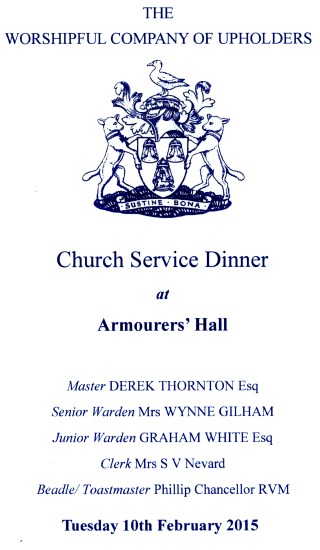
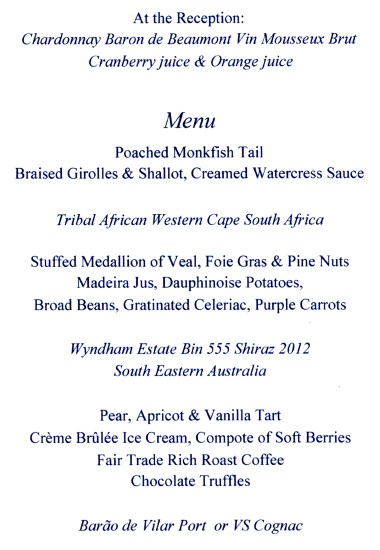

THE WORSHIPFUL COMPANY OF UPHOLDERS of the City of
London can trace its history back to the early days of the Craft Guilds
in which were fostered the high quality of goods and the high standards
of workmanship that have always been the pride of English industry.
The craftsman in Upholstery was known by a name that varied from
Upheldere to Uphouldesterr, but mainly as an Upholder and it is under
this latter name that the Company came into existence "On the Saturday
after the Feast of St. Matthias in the 35th year of the reign of Edward
III" (i.e. the 1st March 1360, Old Style).
The election, also in 1360, of Wardens "to survey and govern the men of
the mistery" is recorded in the City archives together with the grant in
1474 of the right to search for and seize all wares in the City
pertaining to the Craft that were insufficiently or not truly made. The
Company promoted an Act of Parliament of 1494 which extended to the
whole kingdom, the regulations governing fillings to be used in the
making of featherbeds, bolsters, pillows, quilts, mattresses, and
cushions and forbade such materials as Fenn-down, Deers-hair and
Goats-hair. For some centuries the Company exercised its right of
search, destroyed bad wares and inflicted fines, but owing no doubt to
the growth of trade, its powers fell into disuse. The Company abandoned
searches by the middle of the 18th century.
The Company received the grant of its Coat of Arms in 1465 in the reign
of Edward IV, and its first Royal Charter was granted by Charles I in
1626. The original Charter was destroyed in 1666 in the Great Fire, but
a new exemplification was obtained in 1668 and the grant was therein
confirmed by Charles II.
